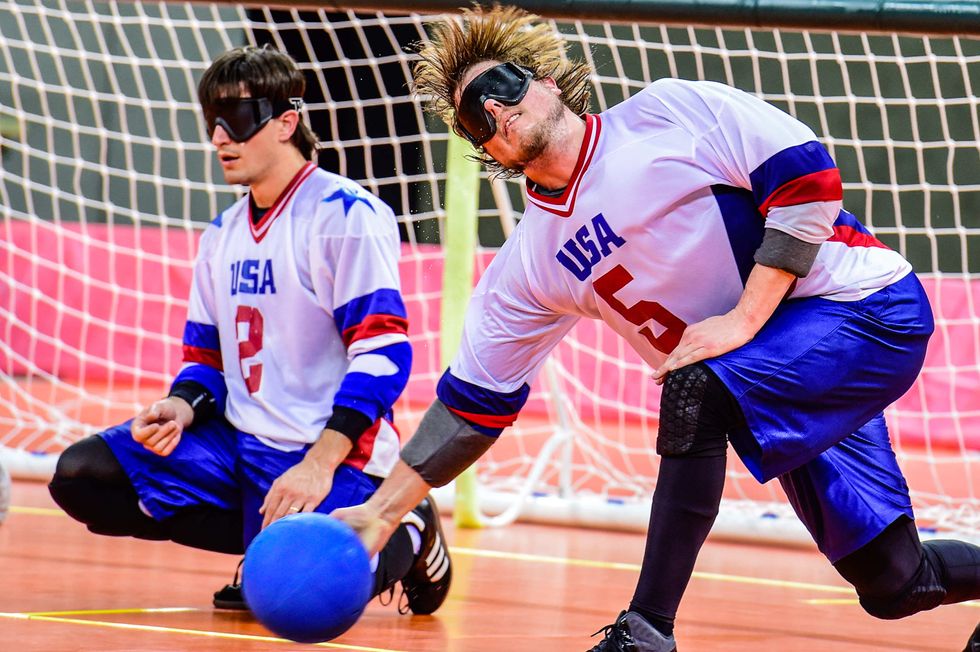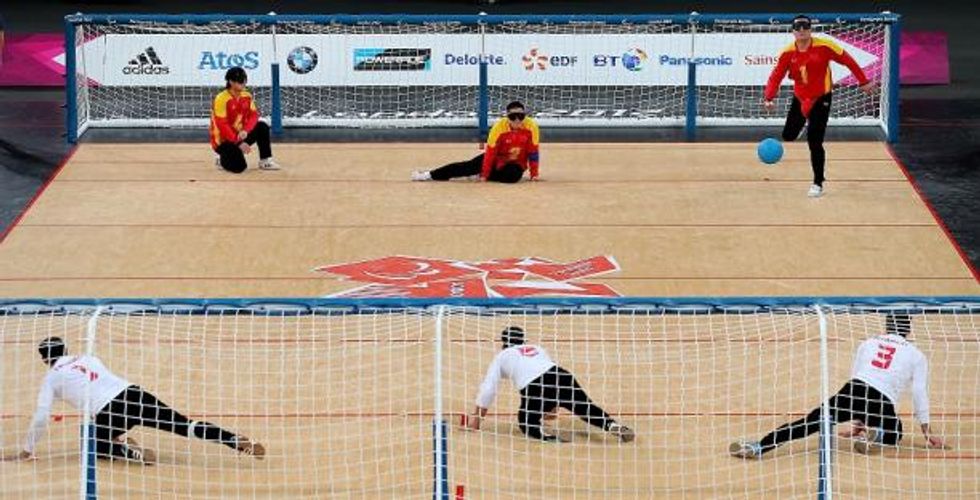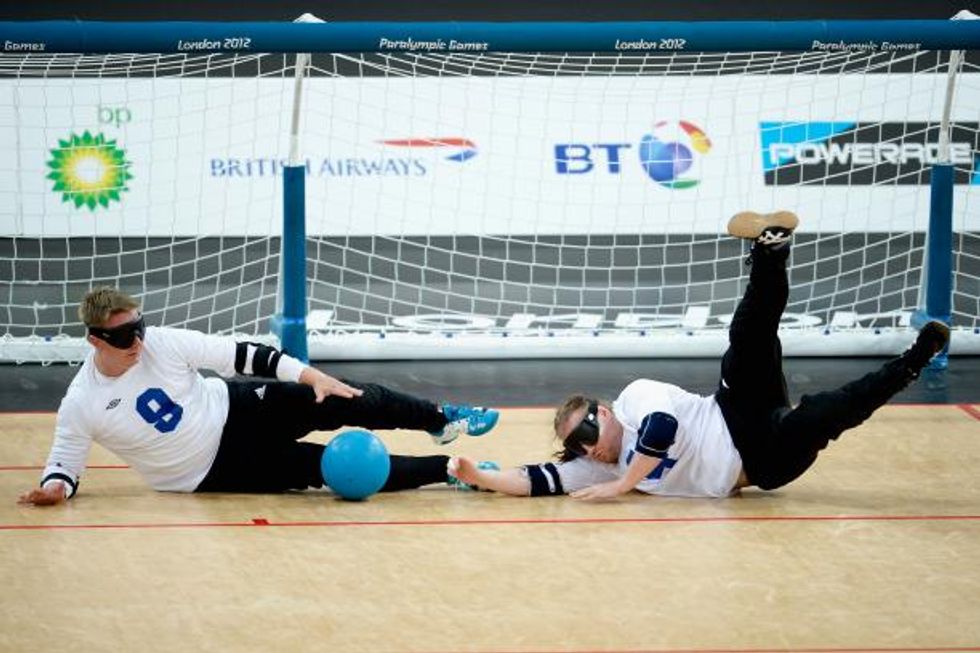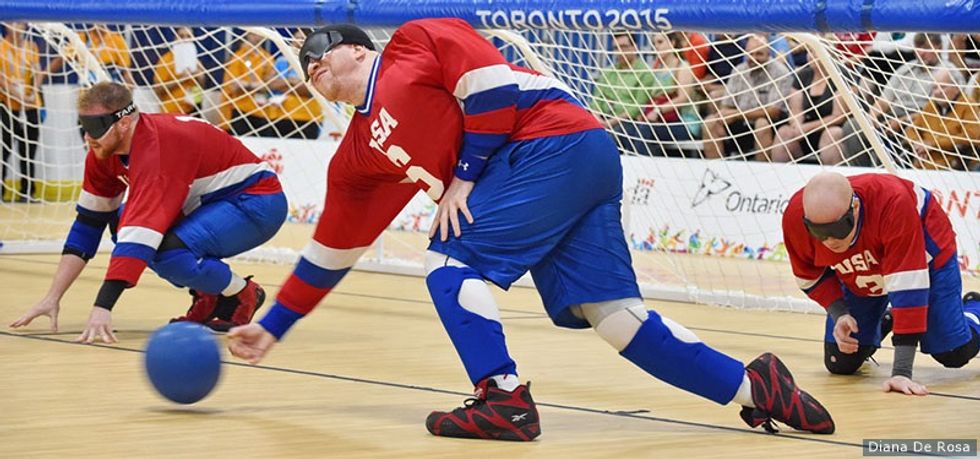It will be featured in the upcoming Paralympic Games. It is played by blind and vision-impaired athletes. They wear masks to put everyone on a level playing field. Teams of three take turns attempting to roll or bounce a ball across an 18 meter court, past the other team and into a goal. The court is similar to a hardwood basketball court except with long goals covering the ends.
The defending team uses audio clues from bells in the ball to determine where the ball is and block it. An interesting aspect of watching goalball is that the stadium and fans must be silent during the play to ensure the players can hear the ball. Goalball has been described as "reverse dodgeball" due to the way any part of the body is used to save the ball. Players can also walk along the long goal and use the floor markings to determine their place on the court.
In just a few weeks, a men's and women's goalball competition will take place during the 2016 Paralympic Games. On the men's side, ten teams will compete in two groups:
Group A: Brazil, Algeria, Canada, Germany and Sweden
Group B: Finland, Turkey, USA, China and Lithuania.
Brazil is the reigning world champion while Finland won the most recent Paralympic tournament in 2012.
On the women's side there are two groups as well:
Group C: Brazil, USA, Japan, Algeria and Israel.
Group D: Turkey, China, Russia, Canada and Ukraine.
USA is the reigning women's world champion with Japan winning gold in 2012. Several qualifying tournaments took place in the past two years as well as the IBSA World Championship.
Adaptive sports in general have come a long way with the ever-expanding Paralympic Games, the long running Warrior Games, and the recent Invictus Games as a few examples, however the individual sports still need to gain traction in the mainstream media. What makes this possible is how truly unique these sports are.
Goalball is not a very well known sport for a few reasons. First, it is entirely unlike any other sport (unless you count bowling, but that's a stretch). In a very surface way, I would call it a mix of team handball and soccer. Essentially the attacking team is trying to score in team handball while the defending team is a group of soccer goalies (or football goalies for those outside the US). And secondly, goalball is geared towards the vision-impaired. This makes it relatively hard to break into the mainstream (but is the reason it is extremely important). There are millions of vision-impaired people in the United States alone but their disability often excludes them from common sports. Football 5-a-side (also featured in the Paralympic Games) is one of the only other sports geared in this way which is essentially soccer for visually impaired athletes. Also, even in the adaptive sports world, it isn't usually the first to come to mind, as people assume more physical disabilities and injuries that put people in wheelchairs to be the general theme.
But this is exactly what the Paralympics do for these sports. With the 2016 Games being one of the biggest ever, it will bring greater attention to this amazing sport and many other adaptive sports.
Please tune in to watch goalball in the Paralympics this coming September. The competitions run from September 8th to September 16th. Comments will be added when TV schedules and livestreams become available.



















